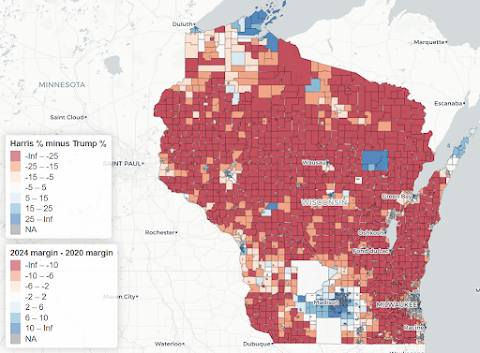And another report for October's data indicated that consumer spending continued last month.Per the Bloomberg table below summarizing the release of the revised data: America’s solid GDP growth of 2.8% was powered by a 3.5% expansion in consumption. #economy #growth
— Mohamed A. El-Erian (@elerianm.bsky.social) November 27, 2024 at 8:17 AM
[image or embed]
U.S. consumer spending increased slightly more than expected in October, suggesting the economy retained much of its solid growth momentum early in the fourth quarter, but progress on lowering inflation appears to have stalled in recent months.... Consumer spending, which accounts for more than two-thirds of U.S. economic activity, rose 0.4% last month after an upwardly revised 0.6% advance in September, the Commerce Department's Bureau of Economic Analysis said. Economists polled by Reuters had forecast consumer spending would gain 0.3% after a previously reported 0.5% increase in September. Adjusted for inflation, consumer spending edged up 0.1%, consistent with a roughly 2.5% annualized growth rate this quarter. Spending rose at a 3.5% rate in the July-September quarter, accounting for the economy's 2.8% growth pace. The Atlanta Fed is forecasting gross domestic product increasing at a 2.7% rate in the fourth quarter.Inflation-adjusted consumer spending growth has stayed consistent since inflation started getting under control in early 2023, and has grown in 9 of the 10 months for 2024. Included in that increase was a solid increase in food services and accomodations, which seems to have shaken off a slump in the first half of 2024 to reach new psot-COVID peaks in October. On the income side, there was a solid 0.6% increase for October and a 0.7% increase in disposable income, more than double the rate of inflation. That rebound is a welcome sign, as newly revised data in the same report indicated that wage and salary growth had flattened in early 2024 before coming back in recent months. And that flattening happened after an earlier revision showed wages had grown faster at the end of 2023. We got evidence earlier in the year that strong job growth in early 2024 was merely "meh", so that adds up, and indicates that not only had the economy moderated in early 2024, but that the Federal Reserve was indeed too slow to lower interest rates from their 23-year highs. However, we also have evidence that things have picked back up in the second half of 2024. And I couldn't help but notice this set of headlines from CBS Marketwatch yesterday. Do NOT allow Trumpers to memory-hole the reality that the US economy was in a very good place at the time he got elected for a second time. Especially since I strongly suspect things won't be that good this time next year.








































